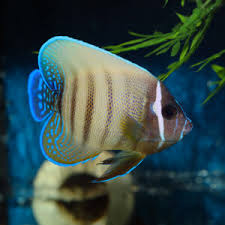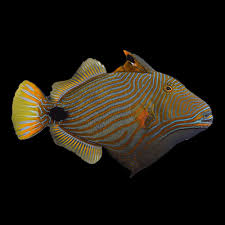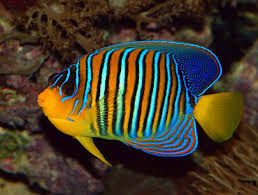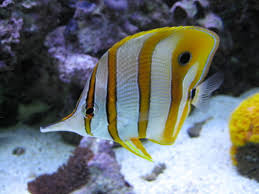The Influence of Chinese Dragons in Eastern Cultures
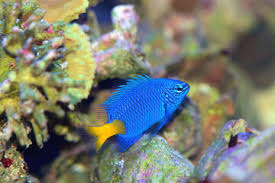
The Chinese dragon, one of the most iconic and revered mythical creatures in East Asia, has influenced a variety of cultural, religious, and artistic traditions throughout the region. It is a symbol of strength, prosperity, and good fortune, and its image has transcended the borders of China, shaping the cultures of countries like Japan, Korea, Vietnam, and other nations in the East. The dragon, as depicted in Chinese culture, represents not just a mythical beast, but also a powerful and positive force deeply connected with the imperial authority, nature, and the cosmos. Its influence on the art, mythology, and daily lives of Eastern cultures is immense, and understanding its significance helps us appreciate the interconnectedness of these cultures and the role the dragon plays in uniting them.
In this article, we explore the historical, cultural, and artistic impact of the Chinese dragon on various East Asian civilizations. From China to Korea, Japan, and Vietnam, we will look at how the image of the Chinese dragon has been integrated into religious practices, folklore, and art, and how it has come to symbolize not only power and protection but also the deep spiritual and cosmic order that governs the world.
The Chinese Dragon: Symbolism and Significance
Before delving into the influence of the Chinese dragon on other cultures, it is essential to understand the dragon’s symbolism in Chinese culture. The Chinese dragon, unlike its Western counterparts, is not a fearsome or destructive creature. It is often associated with imperial power, good fortune, and harmony between heaven and earth. The dragon is revered as a benevolent and protective force, embodying qualities such as wisdom, strength, and protection.
In traditional Chinese cosmology, the dragon is closely associated with the concept of Qi (Chi), or vital energy, and the flow of natural forces. It is believed that dragons can manipulate the weather and water elements, especially rain, which is vital for agriculture. This association with rain and water connects the dragon to fertility, growth, and prosperity, making it an auspicious symbol in both everyday life and royal symbolism.
The dragon’s connection with the Emperor is paramount. In ancient China, the Emperor was believed to be the “Son of Heaven,” a divine ruler whose authority was granted by the celestial forces. The Emperor’s imperial regalia, including the dragon robe, featured intricate dragon motifs that symbolized the emperor’s supreme power and connection to the heavens. The dragon’s role as a symbol of the Emperor has continued throughout Chinese history, cementing its significance in the collective consciousness of the Chinese people.
The Chinese Dragon’s Influence on Japanese Culture
Japan’s connection with Chinese dragons is profound, particularly in its mythology, art, and religious practices. While Japan has its own indigenous folklore, the image of the Chinese dragon heavily influenced Japanese dragon depictions, particularly during the period when Japan adopted many cultural and religious elements from China.
Japanese Mythology and the Dragon
In Japanese mythology, dragons are known as “Ryū” (竜), and while they share similarities with the Chinese dragon, there are distinct differences. Japanese dragons are typically depicted as water deities associated with bodies of water such as rivers, seas, and lakes. The influence of the Chinese dragon on Japan can be seen in the similarities in appearance — serpentine bodies, antler-like horns, and clawed feet. However, Japanese dragons are often more integrated with the natural landscape and spiritual forces of water and the weather.
One of the most famous Japanese dragon myths is that of the “Ryujin” or “Dragon King,” who resides at the bottom of the ocean and controls the tides and weather. In many Japanese tales, Ryujin is depicted as a benevolent deity who has the power to influence the natural world, much like the Chinese dragon’s control over rain and water. The Ryujin also plays a role in several Japanese folktales, where it is shown to assist heroes or protect the natural world.
Dragon Imagery in Japanese Art
Japanese art, especially from the Edo period (1603–1868), is filled with depictions of dragons, heavily influenced by Chinese dragon imagery. Japanese woodblock prints, paintings, and sculptures often show dragons intertwined with natural elements, such as clouds, waves, and mountains. The dragon’s association with water and the natural world is particularly evident in works by famous Japanese artists like Katsushika Hokusai, who included dragons in his ukiyo-e prints.
One of the most notable depictions of the dragon in Japanese art is Hokusai’s The Dragon of the Waterfall at Fuki, 1831, where the dragon is shown emerging from a waterfall in a dynamic and powerful composition. This artwork exemplifies the deep cultural and spiritual connection between dragons and the forces of nature in Japanese art.
The Chinese Dragon’s Impact on Korean Culture
Korea, like Japan, has long been influenced by Chinese culture, and the dragon occupies a similarly revered position in Korean traditions. The concept of the Chinese dragon was adopted into Korean culture, where it became associated with kingship, the imperial family, and protection. In Korean, the dragon is called “Yong” (용), and it shares many of the same symbolic meanings as its Chinese counterpart, including power, wisdom, and good fortune.
Dragons in Korean Folklore and Mythology
In Korean folklore, dragons are often depicted as protectors, and they frequently appear in stories of kings and heroes. One popular myth involves the “Imjin Dragon” that controls the rain and brings fertility to the land, much like the Chinese dragon’s role in agriculture. Korean dragons are said to live in the sky or in bodies of water, and they are frequently depicted with a pearl or a glowing orb, which symbolizes their power to control natural forces.
The dragon is also a symbol of the Korean royal family, and it appears in royal regalia, architecture, and artwork. Similar to the Chinese emperor, the Korean king was often depicted as the “Son of Heaven,” with the dragon as a symbol of his divine right to rule. The Goryeo Dynasty (918–1392) and Joseon Dynasty (1392–1910) saw dragons incorporated into official emblems, palace decorations, and even throne chairs, where they were used to assert the authority of the monarchy.
Dragons in Korean Art
Korean art, particularly during the Joseon Dynasty, features numerous dragon motifs. These dragons are often depicted in a similar style to their Chinese counterparts, with a serpentine body, antler-like horns, and a mane of flowing hair. One of the most famous examples is the dragon imagery found on the traditional Joseon Dynasty throne, where the dragon serves as a symbol of the ruler’s connection to celestial forces.
The Korean dragon also appears frequently in Buddhist art, where it symbolizes the protection of the Buddha’s teachings. Dragons are seen in Buddhist temples, where they are depicted as protectors of the Dharma, guarding the sacred spaces from evil forces.
The Chinese Dragon’s Influence on Vietnamese Culture
Vietnam, being geographically close to China and historically influenced by Chinese culture, also adopted the image and symbolism of the Chinese dragon. In Vietnam, the dragon is called “Rồng” and holds a similar significance as a symbol of imperial power, prosperity, and spiritual strength.
The Dragon in Vietnamese Mythology
In Vietnamese mythology, the dragon is a powerful and benevolent creature associated with the water and the heavens. The most famous myth involving the Vietnamese dragon is the legend of the Lạc Long Quân and Âu Cơ, the ancestors of the Vietnamese people. According to the myth, Lạc Long Quân, a dragon king, married the fairy Âu Cơ, and together they had 100 children, who are believed to be the progenitors of the Vietnamese people. This myth emphasizes the dragon’s role in the creation of the nation and its connection to the divine.
In Vietnamese culture, the dragon is also linked to the agricultural calendar and rainmaking. Like the Chinese dragon, the Vietnamese dragon is seen as a guardian of prosperity and a bringer of fertility, helping the land flourish through its association with water and rain.
The Dragon in Vietnamese Art and Architecture
Dragon motifs are abundant in Vietnamese art, particularly in royal palaces, temples, and traditional architecture. In many historical sites, such as the Imperial City of Huế, dragon imagery adorns the roofs, gates, and ceremonial items. The Vietnamese dragon is often depicted in a slightly more stylized and simplified form compared to the Chinese dragon, but its symbolism remains consistent.
Dragon sculptures, particularly in ancient temples and pagodas, are meant to bring good fortune, protect the sacred space, and enhance the spiritual power of the site. The presence of dragons in Vietnam’s architecture is not only a reflection of the dragon’s importance in folklore but also an example of the cultural exchange between China and Vietnam.
Conclusion
The influence of the Chinese dragon in East Asian cultures is vast and enduring, shaping the mythology, art, and religious practices of countries such as Japan, Korea, and Vietnam. The Chinese dragon serves as a symbol of strength, wisdom, and prosperity, and its image has evolved across cultures while retaining its core significance.
Whether as a protector deity in Japan, a royal symbol in Korea, or a national emblem in Vietnam, the Chinese dragon has left an indelible mark on the cultural landscapes of East Asia. Its influence is not only seen in ancient artwork and folklore but also in modern representations, proving that the Chinese dragon remains a powerful symbol in the cultural fabric of the East. Through these diverse representations, the Chinese dragon continues to inspire creativity, convey moral messages, and unite people across East Asia under a shared symbol of power and prosperity.





